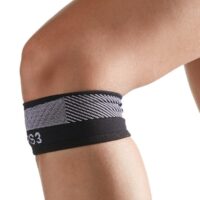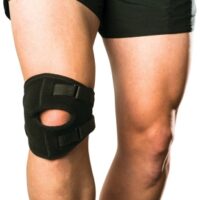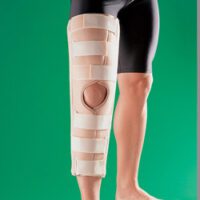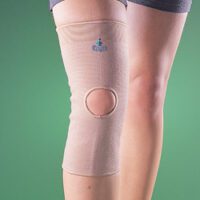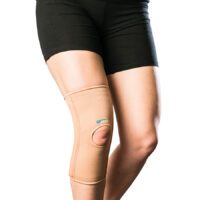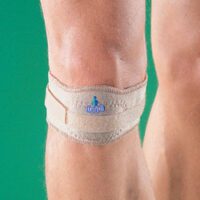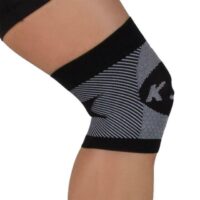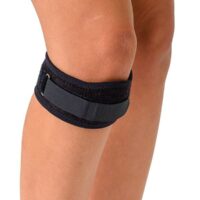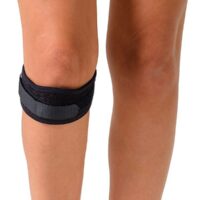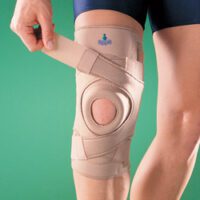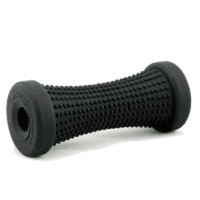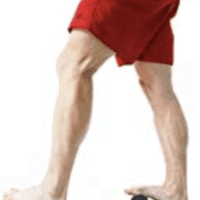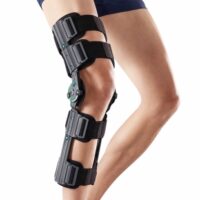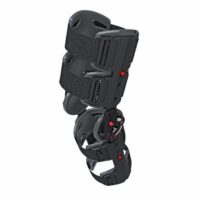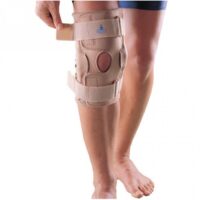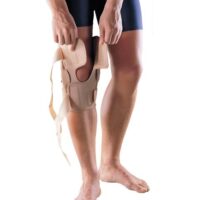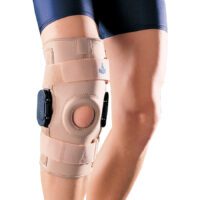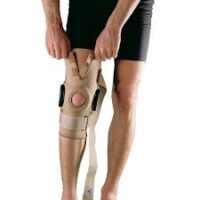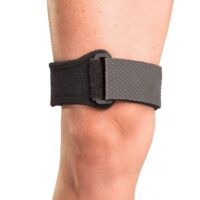Knee Sports Injury
Article by John Miller

Knee Sports Injury? Seeking a Speedy Recovery
Are You Sidelined by a Knee Injury?
Whether you’re an athlete or a sports enthusiast, experiencing a knee sports injury can put a halt to your activities. This guide provides insights into common knee injuries, how to tackle them, and ways to prevent future issues. Understanding your injury and knowing the steps to recovery can significantly influence your healing process and return to sport. Knee injuries, ranging from ligament strains to more severe tears, require careful attention and appropriate management.
Recognising symptoms early and seeking prompt medical advice are key to effective treatment. This guide also covers therapeutic options that can aid recovery, including both traditional rehabilitation exercises and innovative techniques that target the unique challenges posed by knee injuries. Such comprehensive knowledge empowers you to make informed decisions about your health and ensures a safer and more effective path back to your active lifestyle.
Common Knee Sports Injuries
Athletes often face knee injuries such as ACL tears, MCL sprains, meniscus tears, and patellar tendinopathy. These injuries can arise from acute impacts or the overuse of the knee joint. Symptoms vary, but they generally include pain, swelling, and a reduced range of motion. Each type of injury has specific symptoms and recovery protocols which are crucial for effective treatment and recovery.
Learn more about common knee injuries.

Diagnosing a Knee Sports Injury
A precise diagnosis is crucial for effective treatment. Healthcare professionals use a combination of physical examinations and imaging techniques like X-rays, MRIs, and arthroscopy to diagnose these conditions accurately. Understanding the extent and specific location of the injury can help tailor the most effective treatment plans.
Rehabilitation and Recovery Strategies
Recovery from knee sports injuries typically involves rest, ice, compression, and elevation (RICE), supplemented by physiotherapy exercises and strength training. Additionally, incorporating specific mobility exercises and gentle stretching can facilitate a smoother and more effective recovery process. Post-operative care and a gradual return to sport are crucial for a successful recovery. To further aid the healing process, patients may engage in controlled activity modifications that prevent undue stress on the recovering knee. Education on proper techniques and body mechanics during recovery is essential to prevent compensatory injuries.
Regular assessments by healthcare professionals such as your physiotherapist ensure that recovery milestones are met, and adjustments to the rehabilitation plan can be made as necessary. This comprehensive approach helps athletes not only return to their sport but also reduce the risk of future injuries.
Advanced Recovery Techniques
Incorporating advanced physiotherapy techniques such as hydrotherapy and tailored exercise programs can significantly enhance recovery. These methods help restore joint function and strengthen the muscles around the knee, reducing the likelihood of re-injury. Patient education on movement mechanics and joint care is also essential to ensure long-term health and injury prevention.
Additionally, techniques like neuromuscular training, which focuses on improving proprioception and motor control, are integral to advanced recovery strategies. Utilising modern technology such as biomechanical assessments and real-time feedback devices can refine rehabilitation programs to target specific deficits. This tailored approach not only expedites recovery but also optimises the functional capacity of the knee, preparing the individual for a return to high-performance activities without fear of re-injury.
Preventing a Knee Sports Injury
Preventive measures include proper training techniques, warm-up exercises, stretching routines, and choosing the right equipment. Maintaining overall knee health is vital to minimise the risk of injuries. Education on proper techniques and body mechanics plays a critical role in preventing injuries and ensuring athletes can enjoy their sports safely and for longer. For more preventive tips, visit Knee Injury Prevention at PhysioWorks.
Non-Surgical Treatment Options
Many knee injuries can be managed without surgery. Options include physiotherapy, medication, bracing, and assistive devices. These treatments help manage pain and improve functionality. Non-surgical treatment options also focus on enhancing joint mobility and reducing stiffness, which are crucial for long-term recovery and normal function. For example, physiotherapy exercises are tailored to strengthen the muscles around the knee, providing better support and reducing the load on the joint.
Medications such as anti-inflammatories can reduce swelling and pain, making daily activities more manageable. Bracing stabilises the knee during movement, and assistive devices such as walking sticks or walkers help maintain independence and safety.
Surgical and Alternative Therapies
Severe injuries might require surgical interventions such as ACL reconstruction or meniscus repair. Complementary therapies like acupuncture, dry needling, and massage can also support the recovery process. These alternative therapies can be integrated into a comprehensive treatment plan to address pain management and facilitate healing. Surgical solutions are typically recommended when structural damage to the knee limits mobility and affects quality of life.
Post-surgery, therapies like physiotherapy, exercise prescription, acupuncture and massage play roles in reducing dependence on pain medications and speeding up recovery by improving circulation and muscle relaxation. Integrating these methods can lead to a more holistic approach to rehabilitation and a quicker return to daily activities.
Consult Your Physiotherapist or Doctor
Engaging with a qualified physiotherapist or knee surgeon is essential for a tailored treatment plan. They can guide you through your recovery, ensuring you receive the most effective interventions for your specific needs. A physiotherapist will also provide ongoing support and adjustments to your treatment plan based on your recovery progress.
Conclusion
Dealing with a knee sports injury can be challenging, but with the right approach, you can return to your favourite activities. Understanding your injury, undergoing appropriate treatment, and taking preventive steps are key to your recovery.
What to Do Next?
If you suspect a knee injury, consulting a physiotherapist or doctor is your next step. They can assess your situation and recommend the best course of action based on the latest research and effective treatment protocols.
Rochedale - Call 38410277
Book Online: RochedaleSalisbury - Call 32751044
Book Online: SalisburySandgate - Call 32691122
Book Online: SandgateFAQs
- What is the most common knee injury in sports? The most common knee injury in sports is probably a simple knee strain, but the most common season-ending sports knee injury is an anterior cruciate ligament (ACL) tear. This injury often occurs during sports that involve sudden stops, jumps, or changes in direction.
- How do I know if my knee injury is serious? Signs that a knee injury is serious include severe pain, swelling, inability to bend the knee, significant bruising, or inability to bear weight on the leg. If these symptoms are present, it’s crucial to seek medical evaluation.
- How to treat a sports knee injury? Initial treatment for a sports knee injury usually follows the RICE method: Rest, Ice, Compression, and Elevation. Follow-up care might include physiotherapy, bracing, medication, or in some cases, surgery, depending on the severity and type of injury. Seek health professional advice for your best and quickest solution.
- What are three signs of a meniscus tear in the knee? Signs of a meniscus tear include pain in the knee, swelling, and a popping sensation during the injury. Other symptoms may include difficulty bending the knee and a feeling that the knee is giving way or is locked in place. Medical imaging, like an MRI, is often necessary to confirm the diagnosis. More info here: Meniscal Tears.
- Is it OK to exercise an injured knee? Gentle exercise and movements may be beneficial depending on the type and severity of the injury. However, it’s best to consult with a healthcare professional who can recommend safe activities tailored to your specific injury.
- Is walking OK for knee injury? Walking can be OK for a mild knee injury if it doesn’t cause pain. However, for more severe injuries or if walking causes pain or swelling, it’s better to rest the knee and consult a healthcare professional.
- How do I know if I tore a ligament in my knee? Signs of a torn knee ligament include a loud pop or snap at the time of injury, severe pain, immediate swelling, and a feeling of looseness in the joint. These symptoms usually necessitate medical attention for accurate diagnosis and treatment.
- What is a blown knee? A “blown knee” is a non-medical term often used to describe a severe knee injury that involves damage to multiple knee structures, such as the ligaments, tendons, and cartilage. This type of injury requires medical evaluation and often extensive treatment.
Related Articles
- ACL Injury: Symptoms and Treatment
- Discover insights into the symptoms of ACL injuries and the latest treatment techniques. Link: ACL Injury: Symptoms and Treatment
- Meniscus Tear: Recovery and Rehabilitation
- Learn about the recovery process for a meniscus tear and effective rehabilitation exercises. Link: Meniscus Tear: Recovery and Rehabilitation
- Patellar Tendinopathy: Understanding and Management
- Explore how patellar tendinopathy develops and ways to manage this painful knee condition. Link: Patellar Tendinopathy: Understanding and Management
- Knee Arthroscopy: Post-Operative Care
- Find out what to expect after a knee arthroscopy, including essential care tips. Link: Knee Arthroscopy: Post-Operative Care
- Knee Bracing: What You Need to Know
- Understand the benefits of knee bracing and how to choose the right one for your injury. Link: Knee Bracing: What You Need to Know
- RICE Protocol: Does It Really Work?
- Read about the RICE (Rest, Ice, Compression, Elevation) protocol and its effectiveness in injury recovery. Link: RICE Protocol: Does It Really Work?
- Hydrotherapy for Knee Recovery
- Learn how hydrotherapy can aid in the recovery of knee injuries and enhance rehabilitation. Link: Hydrotherapy for Knee Recovery
- Non-Surgical Treatment for Knee Injuries
- Explore various non-surgical treatment options for knee injuries that can help avoid surgery. Link: Non-Surgical Treatment for Knee Injuries
- Stretching Exercises for Knee Health
- Get to know stretching exercises that can improve knee health and prevent further injuries. Link: Stretching Exercises for Knee Health
- Knee Injury Prevention Techniques
- Discover effective techniques to prevent knee injuries during sports and everyday activities. Link: Knee Injury Prevention Techniques




